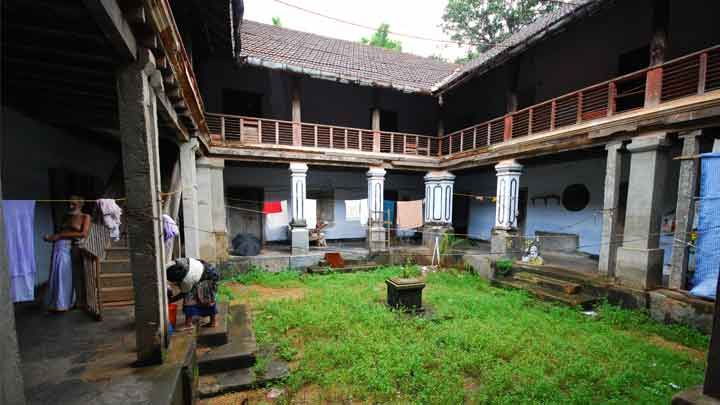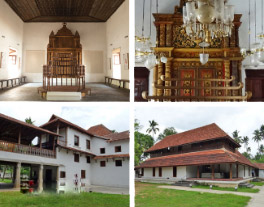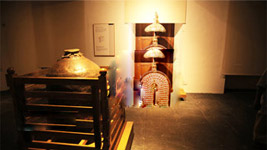Kodungallur Kovilakam

The rule of the Perumals lasted from the 9th to the 12th century CE. Following the decline of their power, many power centres sprung up. Each claimed to derive their exalted status from the erstwhile rulers and set themselves up as swaroopams. The swaroopam that ruled over the Kodungallur region was the Padinjattedathu swaroopam. Their headquarters came to be known as Kodungallur Kovilakam [royal quarters].
Kodungallur Gurukulam – An Ancient University
The Kodungallur Kovilakam was unique in that it patronized learning as well as the arts, and continued to do so till the last years of the 19th century. It became famous as Kodungallur Gurukulam and even produced a new school of poetry. The Kodungallur Gurukulam was an inexhaustible mine of knowledge, which could very well be called the first university of Kerala. Scholars like Vidwan Kunjirama Varma, Kochunni Thampuran and Kunjan Thampuran were among the teachers who gave training here.
Kodungallur Kovilakam was known as the ‘Nalanda of Kerala,’ an abode of preceptors, and followed a great tradition of imparting knowledge in different topics like grammar, literature, rhetoric, sculpture, astrology, Vedanta and the physical sciences. Separate buildings called the Old Bungalow, the New Bungalow, the Eastern Bungalow and so on were set apart for the pursuit of learning. Those who were denied entry into the royal buildings were given free accommodation in the outhouses.
Students at the Gurukulam were free to choose the subjects of their liking. They remained in one class for a year during which they studied a single book. When they graduated to the next, a different text had to be mastered. Active teaching lasted only one-and-a-half to two hours each day. The rest of the time was used for rote learning, discussions, criticism, clearing of doubts and so on. If anyone found any subject too difficult, they had the freedom to choose another. Serious extra-curricular activities like Aksharashlokam [reciting of poems, according to certain pre-set rules] and enactment of plays were encouraged. Such was the generosity of the Kovilakam that each student was given free meals twice a day, four thorths [unstitched dhoti tied at the waist and reaching up to the knees] to wear, and a mat to sleep on. This atmosphere was conducive to genuine learning and deep scholarship.
The most towering figure among the poets of the Kodungallur Kovilakam was Kunjikuttan Thampuran, one of the best and most talented writers of Malayalam literature. Kodungallur Kovilakam produced many promising talents who left their imprint in the literary history of Kerala. In those days, as poets had a deep association with the Kovilakam, and it was known under the label ‘Kodungallur Kalari’ [training centre].
Kodungallur was known for its tradition of sharing knowledge from the time of Kodungallur Vidwan Ilaya Thampuran (1800-1851). His disciple Kumbakonam Krishna Sastrigal later became a great grammarian. Valiya Thampuran and Ilaya Thampuran were experts in Astrology. Goda Varma Thampuran was another famous member of the Kovilakam. Vidwan Kunjirama Varma Thampuran (1850 – 1917) was a poet and grammarian.
Kochunni Thampuran was an exponent in astrology and architecture, and Kunjan Thampuran was an expert in dialectics. Cheriya Kochunni Thampuran was a poet and Bhatta Sree Goda Varma Thampuran, an expert in legal science. All these members kept alive the glory of Kodungallur Kovilakam.

